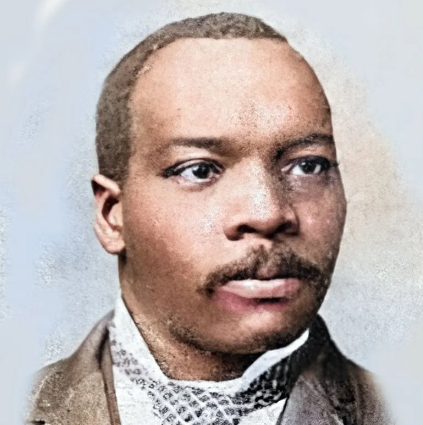Granville T. Woods: The Lost Genius Rediscovered
By: Michael Aaron, Executive Director Rickenbacker Woods Foundation & Learning

“But where does a ten-year-old boy go?”
“Did his parents send him away? Why?”
These questions, posed by high school interns at the Rickenbacker Woods Foundation, capture the mystery surrounding Granville T. Woods—a brilliant African American inventor often overshadowed despite his profound impact on the Industrial Revolution.
In Driving Park, Columbus, Ohio, high school interns explore history while uncovering forgotten stories. At the former boyhood home of Eddie Rickenbacker—WWI ace and race car driver— they examine his life alongside that of Woods, the “Black Edison,” whose inventions revolutionized electrical and railway systems. Unlike Rickenbacker’s well-documented childhood, Woods seemingly disappeared at age 10, reemerging decades later with over 60 patents. How did he bridge those missing years to become one of the foremost inventors of his era?
Uncovering the Missing Years
Thanks to a planning grant from America 250 and the Ohio Humanities Council—and the meticulous work of Columbus Metropolitan Library archivist Aaron O’Donovan—an overlooked historical detail led to an extraordinary discovery. Woods’ life, once fragmented, is now coming into focus.
He was nurtured within a Quaker community and mentored by pioneering African American leaders, including writers and Underground Railroad conductors. His early career at the Columbus Buggy Works gave him the technical foundation to innovate. Later, he operated his own factory, overcoming systemic barriers while defending his patents, notably against Thomas Edison.
Woods’ inventions included revolutionary devices for railway safety, early roller coasters, and controlled warming systems—a precursor to incubators. His genius was undeniable, but his fight for recognition reflects the racial inequities of the era.
A Legacy Reclaimed
The Rickenbacker Woods Foundation is transforming these discoveries into inspiration for future generations. Through planned projects—a “white board” house museum, a renovated learning center, and a real trolley classroom—the untold story of Woods will anchor Driving Park’s rich history as Columbus’s first streetcar district.
The interns’ detective work breathes life into Woods’ legacy, showing how mentorship and resilience can transform adversity into achievement. His story, long overshadowed, offers a powerful lesson about reclaiming erased narratives and celebrating contributions that shaped the modern world.
Granville T. Woods is no longer a shadow in history. His legacy will inspire generations to come.